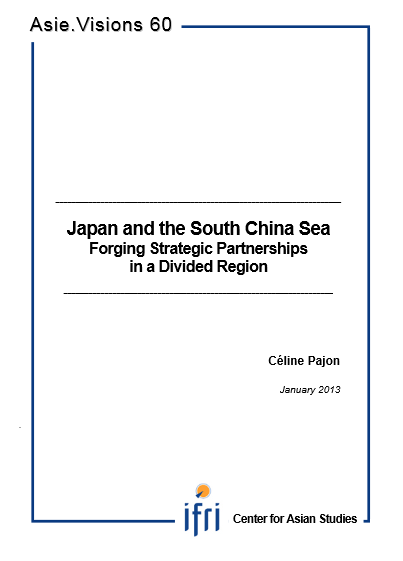Japan and the South China Sea: Forging Strategic Partnerships in a Divided Region

In the midst of growing tensions with China, Japan is deepening its strategic engagement in Southeast Asia. Preserving stability in the South China Sea, which is threatened by renewed frictions around contested territories, is a vital interest for sea lane-dependent Japan. Moreover, Tokyo considers Southeast Asian countries as crucial partners in balancing against an increasingly powerful and more assertive China.
Therefore, Tokyo is stepping up its security cooperation in the region through the promotion of regional maritime and security institutions, but more importantly, by building strategic partnerships and helping to foster the maritime capacities of key like-minded countries (notably Indonesia, the Philippines and Vietnam).
These initiatives augment the “great game” of influence currently underway in Southeast Asia and in which Japan is soft-balancing China and supporting a more sustainable US presence. Still, forging strategic partnerships is not an easy task as ASEAN countries, if increasingly polarized, are not passive in the face of the great powers contest.
As East Asia grows seemingly more divided and as a competition for influence is flaring up, Europe is politically absent. Yet, expectations for more politico-military involvement from European countries in the region do exist, especially in Japan. If discussions about a possible “EU pivot” to East Asia are developing, many obstacles and limitations still constrain an expansion of European influence in the region.

Available in:
Regions and themes
ISBN / ISSN
Share
Download the full analysis
This page contains only a summary of our work. If you would like to have access to all the information from our research on the subject, you can download the full version in PDF format.
Japan and the South China Sea: Forging Strategic Partnerships in a Divided Region
Related centers and programs
Discover our other research centers and programsFind out more
Discover all our analyses
RAMSES 2024. A World to Be Remade
For its 42nd edition, RAMSES 2024 identifies three major challenges for 2024.
France and the Philippines should anchor their maritime partnership
With shared interests in promoting international law and sustainable development, France and the Philippines should strengthen their maritime cooperation in the Indo-Pacific. Through bilateral agreements, expanded joint exercises and the exchange of best practices, both nations can enhance maritime domain awareness, counter security threats and develop blue economy initiatives. This deeper collaboration would reinforce stability and environmental stewardship across the region.

The China-led AIIB, a geopolitical tool?
The establishment of the Asian Infrastructure Investment Bank (AIIB) in 2016, on a Chinese initiative, constituted an attempt to bridge the gap in infrastructure financing in Asia. However, it was also perceived in the West as a potential vehicle for China’s geostrategic agendas, fueling the suspicion that the institution might compete rather than align with existing multilateral development banks (MDBs) and impose its own standards.
Jammu and Kashmir in the Aftermath of August 2019
The abrogation of Article 370, which granted special status to the state of Jammu and Kashmir (J&K), has been on the agenda of the Bharatiya Janata Party (BJP) for many decades.







